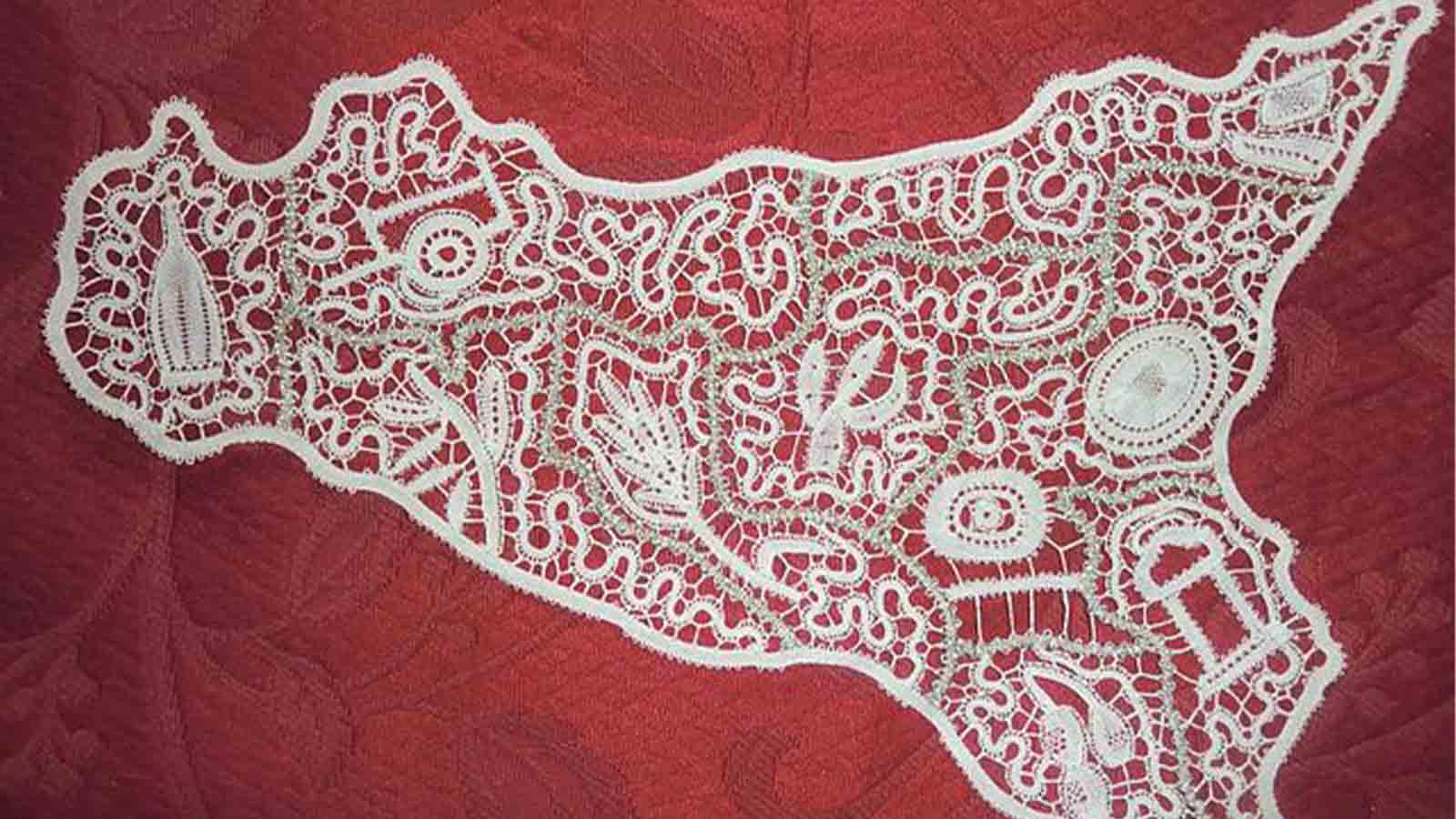
There are many ways to get to know a new place in depth: in fact, it is not enough to go around the most beautiful monuments or taste the typical dishes.
It is also the centuries-old traditions which, more than anything else, tell the story of a place: think of the ceramics of Caltagirone, the working of lava stone in Giarre and the very famous Bobbin of Mirabella Imbaccari, considered one of the most beautiful not only in Sicily but in the whole world. There are also other villages that boast their own lace art, from Mazara del Vallo to Aragona, Santa Ninfa and Marsala: that of Mirabella Imbaccari, however, stands out for the complex workmanship that lies behind it, giving life to true works of art.
The birth of the Tombolo di Mirabella Imbaccari
The town of Mirabella Imbaccari is located in the shadow of the Erei Mountains between Piazza Armerina and Caltagirone, between hazelnut groves and green hills.
The town was founded by Giuseppe Maria Biscari in 1610, baptizing him with the name of his beloved wife Eleonora Mirabella. The term Imbaccari instead has an uncertain origin: it most likely refers to the ancient city of Imacharacited by Pliny and Cicero.
Mirabella Imbaccari is a small town known for the processing of what are considered the laces between finest in Italy and the credit goes to Angelina Autieri, the baroness wife of Ignazio Paternò Castello. The man, after being miraculously cured of a bad illness, decides to strip himself of all his possessions and to move to a convent in Mirabella Imbaccari with his wife. She then the latter, to help local women to emancipate themselves and to have their own economic autonomy, established in 1910 theBobbin work. For the occasion she had a small group of nuns who were part of the Order of Santa Dorotea arrive directly from Rome, who taught the art of bobbin lace to the women of Mirabella Imbaccari. The latter learned the art so well that they perfected the workmanship of the laces, also presenting them at prominent international fairs and making them a fundamental part of the cultural heritage of Mirabella Imbaccari. It is indeed a light and very fine lace, with a texture so rich in curls, flowers and roses that one cannot fail to see a clear influence of the Sicilian Baroque.
The most beautiful and precious Sicilian lace
When we talk about bobbin lace we are referring not only to the worked lace but also to the tool used to make it. Well the Mirabella Imbaccari lace it is made strictly by hand, by artisans who work with safety, skill and a lot of passion.
Everything usually starts from a design, fixed by means of spindles to a support, usually a cushion, called a bobbin lace.
The so-called running stitches kick off the work, following some traits of the same design: the process, i.e. the weaving, continues by skilfully twisting the cotton or linen thread around the bobbins. Very few bobbins are needed to make lace and simple lace, while 100 bobbins are also needed to complete much more complex and elaborate jobs.
Once the lace has been completed it can be used as it is, to decorate surfaces in the home, or it can be applied to fabrics to make tablecloths, blankets or curtains.
Anyone who wants to discover and learn more about the art of Mirabella Imbaccari bobbin lace can visit the "Permanent Tombolo Museum“. It is a well-organized museum space where laces, some of which are very old, are placed in thematic areas: there are, for example, laces related to birth, marriage and daily life.
Mirabella Imbaccari is however a village that deserves to be visited not only for its Sicilian lace, but also for some places that deserve attention. For example, a visit to the Palazzo Biscari, in Baroque style with elegant curvilinear balconies in wrought iron and opposite Church of Our Lady of Grace. Even the cult building shows its facade in Sicilian Baroque, complete with a clock in the center and a bell tower with a three-mullioned window at the top: inside the mother church it is possible to admire the Transfiguration created by Michele Salvo da Gangi and the Crucifixion, attributed in all probability to Michelangelo da Gangi.
Those who want to take a leap into the local Sicilian tradition and craftsmanship, just have to travel to the Catania area and stop at Mirabella Imbaccari, the cradle of the finest Sicilian lace.
© Image by Neckline Rosary, CC BY-SA 3.0, via Wikimedia Commons









